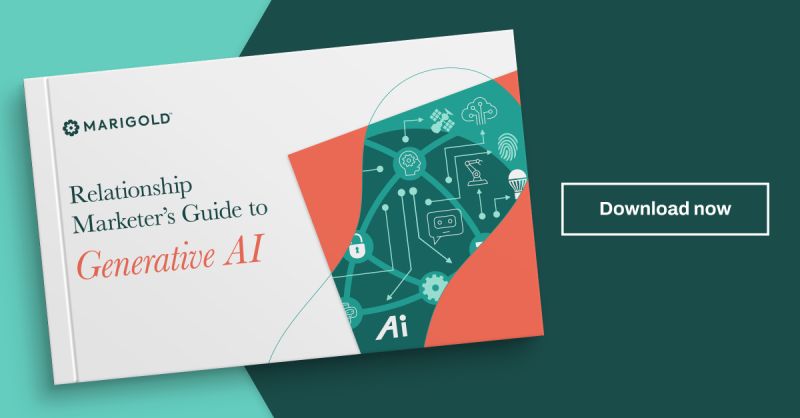Which Is Best, Digital Or Print Communications?
16 Apr 2024

All too often going paperless is championed by businesses wanting to move their customers on-line to reduce cost, with misleading emotional statements of lower environmental impacts. However, the benefits and effectiveness of one medium over the other is not that clear cut. Furthermore, the impact of digital communications is not consequence free, too often ignored and not fully understood.
Since the invention of the first personal computer in the mid 1960’s, the world of digitisation has transformed technology to be able to process, store and access data instantly anywhere on the planet. The pace of change has been breathtaking, and that change is only going to quicken thanks to the voracious demand for high-speed mobile and virtual computing to power our interconnected world and the Internet of Things (IoT), Artificial Intelligence (AI), Augmented Reality (AR), Virtual Reality (VR), automation and robotisation. Much of this has had a positive impact on our lives thus far, particularly connecting people over long distances. Unfortunately, it’s not all good news!
The Environmental Impacts Of Digital
The environmental impact of this digital evolution cannot be ignored. The ICT, (Information and Communication Technology), industry accounted for 4-6% of global electricity use in 2020, which is more than 2% of global greenhouse gas emissions. With increasing demand, the ICT industry is expected to increase its global electricity use over the next decade.1
Coupled with the energy requirements to power digital communications, the demand for non-renewable rare earth minerals is growing at a comparable rate, creating a huge waste challenge for future generations.2
The electronic waste problem is colossal and growing quickly. In 2019, the industry produced 53.6 million tonnes of waste globally. When precious materials like iron, copper and gold are thrown away, this fuels more extraction through mining with consequential negative environmental and social impacts. This problem is compounded by the fact that only 42.5% of e-waste was collected for recycling in Europe in 2020.3
Much has been written about the impact on our health, particularly for younger people, by the addiction to electronic devices. Decreasing levels of concentration, a decrease in memory retention and a negative impact on our wellbeing. All this takes its toll on society and leads to a potential breakdown in meaningful and relevant communication.4
Printed Textbooks Make A Return To Education
As reported in the UK Guardian newspaper5 , a soon-to-be published, groundbreaking study from neuroscientists at Columbia University’s Teachers College has come down decisively on the matter: for “deeper reading” there is a clear advantage to reading a text on paper, rather than on a screen, where “shallow reading was observed”. This research is not unique and follows other country concerns about the removal of textbooks from schools.
Sweden was one of the first European countries that adopted digitisation within its educational curricula in 2018. It has now announced going back to using printed textbooks in an attempt to improve education. Swedish Minister of Education, Lotta Edholm, announced in an article published in Göteborgs-Posten, June 2023, that it was proven by studies presented by the Swedish National Agency for Education that students who are reading textbooks can understand better than those who are using digital content.6
Reading printed media is considered to be more relaxing, engaging and less distracting too. Books also help lock-up carbon long term, if not forever, and don’t require constant energy to be powered. They’re also easy to gift and share physically, but not so easy to store and distribute quickly. It’s good to see that books are making a come-back according to consumer research.7
The Stavanger Declaration on the Future of Reading summarises its findings, following a large meta-study in 2019 in the field of reading comprehension.
Other Digital Impacts
It is also worth bearing in mind that just because something is digital, like a bank statement, airline or concert ticket, it does not mean it will not be printed onto paper. Anything digital consumes data and requires storage, (often permanent), and therefore energy and physical resources to maintain. Data hubs can be powered by renewable energy, but we are a long way from achieving this ideal. Emails, photos, text and voice messages and huge video files consume massive resources and as we move to increased graphic processing power requirements for AI, AR and VR, this will only escalate.
Then there’s the important question of security. Digital data can be easily corrupted, hacked and in the wrong hands cause serious issues over intellectual property and identity theft. Losing power is also a risk and any digital medium could be vulnerable. Of course, printed documents can be stolen, left on a train, or scanned and shared so neither solution is perfect. However, digital theft is increasingly common and is much faster and harder to detect and control.
Printed Media - What’s The Environmental Impact?
Providing print and paper originates from managed forest sources, examples; FSC, PEFC or SFI certification, as does the majority of all paper and paper packaging in Europe, there is an assurance that timber has been harvested in line with the best environmental practices and there is adequate replanting of trees; renewing the forest cover, but also providing a valuable wood resource for the future.
Between 2005 and 2020, European forests, which provide 90% of the virgin wood fibre to the European paper industry, grew by 58,390km2 . This is an area greater than Switzerland and amounts to about 1,500 football pitches of forest growth every day.9
New forest growth prevents soil erosion, increases CO2 absorption from the atmosphere, replaces CO2 with oxygen and acts as a carbon sink. Replanting of forests is not only paramount but great effort is made to ensure that biodiversity and soil health is sustained and regenerated.
Modern paper mills have invested heavily to reduce their water and energy needs significantly reducing their environmental impacts. European paper mills produce 54.6% of their electricity on-site, of which more than 95% is generated through highly efficient CHP, (Combined Heat and Power), plants, which maximise efficiency and reduce energy inputs.10 The paper industry is the biggest user of renewable bioenergy in Europe. On average 61% is generated from biomass, 33% from gas and the balance from coal and other fossil fuels.11
Water is used within the making of paper, but around 90% is returned to the environment, after being thoroughly treated.11
The direct CO2 emissions of Manufacturing Industries and Construction in Europe accounted for 16.9% of total emissions in 2021. Falling within that category, the pulp, print and paper sector is one of the lowest CO2 emitters at only 0.9%. In comparison, the transport sector accounted for 30.1% of total CO2 emissions and the residential sector accounted for 11.9% of emissions in 2021.1
What Do Consumers Think About Paper?
In Europe, paper has the highest recycling rate of any material at 71% for paper11 and 82% for paper-based packaging.13 Consumer research conducted by Two Sides7 shows:
• 65% of European consumers prefer to read printed books,
• 52% believe children learn better from printed materials
• 76% want the right to choose how they receive their communications - printed or digital.
However, despite consumers preferences for paper products:
• 60% of consumers believe European forests are shrinking.
• 82% believe the recycling rate for paper is below 60%
Why Are Consumers Confused?
Misconceptions are often born from spurious communications from organisations who are putting an environmental spin on a simple cost saving exercise. For example, ‘switch to digital billing, save a forest’, ‘Stopping our catalogue has saved 50,000 trees’. Such misleading statements have been shared by many businesses with millions of customers over many years. It’s no wonder that many people are misinformed and confused.
Greenwashing, which is behaviour or activities that make people believe that a company or organisation is doing more to protect the environment than it really is, conflicts with many countries existing and new, European advertising regulations. Under the Green Claims Code and the European Green Deal, companies in the UK and Europe could face a fine if claims are not factually correct or are unsubstantiated.
What Should We Choose - Digital Or Printed Media?
There is no right answer! Both are highly effective communication media channels and there is increasing interaction between them.
For consumers or a business organisation, print or digital, or both, must be decided on a case by case basis. Both channels have environmental impacts and therefore the choice should be made on personal or, for businesses, customer preferences.
Comparing the carbon impact of digital versus printed media is a challenging exercise. Data is more accessible for the print industry than it is for ICT. There are comprehensive, certified methodologies that allows us to understand the carbon impact of print. This is not necessarily the case for digital media, which will be essentially based on assumptions. While comparative LCAs can generate some interesting insights, they often rely upon national averages, as well as estimated guesses and assumptions. These methodological choices can highly influence the outcomes of any study.14
The wide acceptance of QR codes, since COVID, has enabled most people with a smartphone to trust scanning objects and images to download, or find out more information and even create augmented and virtual experiences. This digital information can be embedded within the artwork and images to make seamless communications, which can add another dimension to communication, which must be a positive development, thanks to digitisation in concert with printed media.
Conclusion
If you’re a consumer, don’t be fooled by vague or false green claims, choose the media that suits you best for a given task or application.
If you’re a business and wish to justify your media choices, try to assess the carbon impact, but accept that the outcome may not be clear cut. In the end, go with your best judgement, but avoid making vague or false green claims. Try to understand what your intended audience would like and how best your media choice will achieve the preferred outcomes.
Our objective should be to work in balance with nature, respecting biodiversity, social inclusion and moving toward a regenerative approach to producing food, energy and renewable materials, like paper, powered by the abundance of solar, wind, hydro and other clean energy sources.
Written by Ian Bates from Two Sides
Sources: 1. UK Parliament, Energy consumption of ICT, 2022 2. The Shift Project, Environmental Impacts Of Digital Technology, 2021 3. Global E-waste Monitor, UNEP and Unitar, 2050 Electronic & Electrical Waste Outlook In West Asia, 2023 4. UK House of Lords. Technology: Health and Wellbeing of Children and Young People 2019 5. JR MacArthur, Guardian Newspaper, 2023 Kids read better from paper than from screens 6. Jusoor Post, Breaking The Digital Trend, 2023 7. Two Sides Trend Tracker, European Findings, 2023 8. ereadcost.eu/stavanger-declaration, 2019 9. Two Sides Analysis of FAO data, 2005-2020 10. Combined Heat and Power, CHP, in the Paper Industry, Finning, 2023 11. CEPI Key Statistics, 2022 12. European Environmental Agency, EEA Greenhouse Gases – data viewer, 2023 (Total pulp, paper and print CO2 emissions for the EU-27 in 2021 was 23,096,235 tonnes. Total CO2 emissions for all sectors in the EU-27 in 2021 was 2,546,204,939.) 13. Eurostat, 2020 14. Intergraf, Print’s Carbon Footprint, accessed Feb 2024





Please login to comment.
Comments